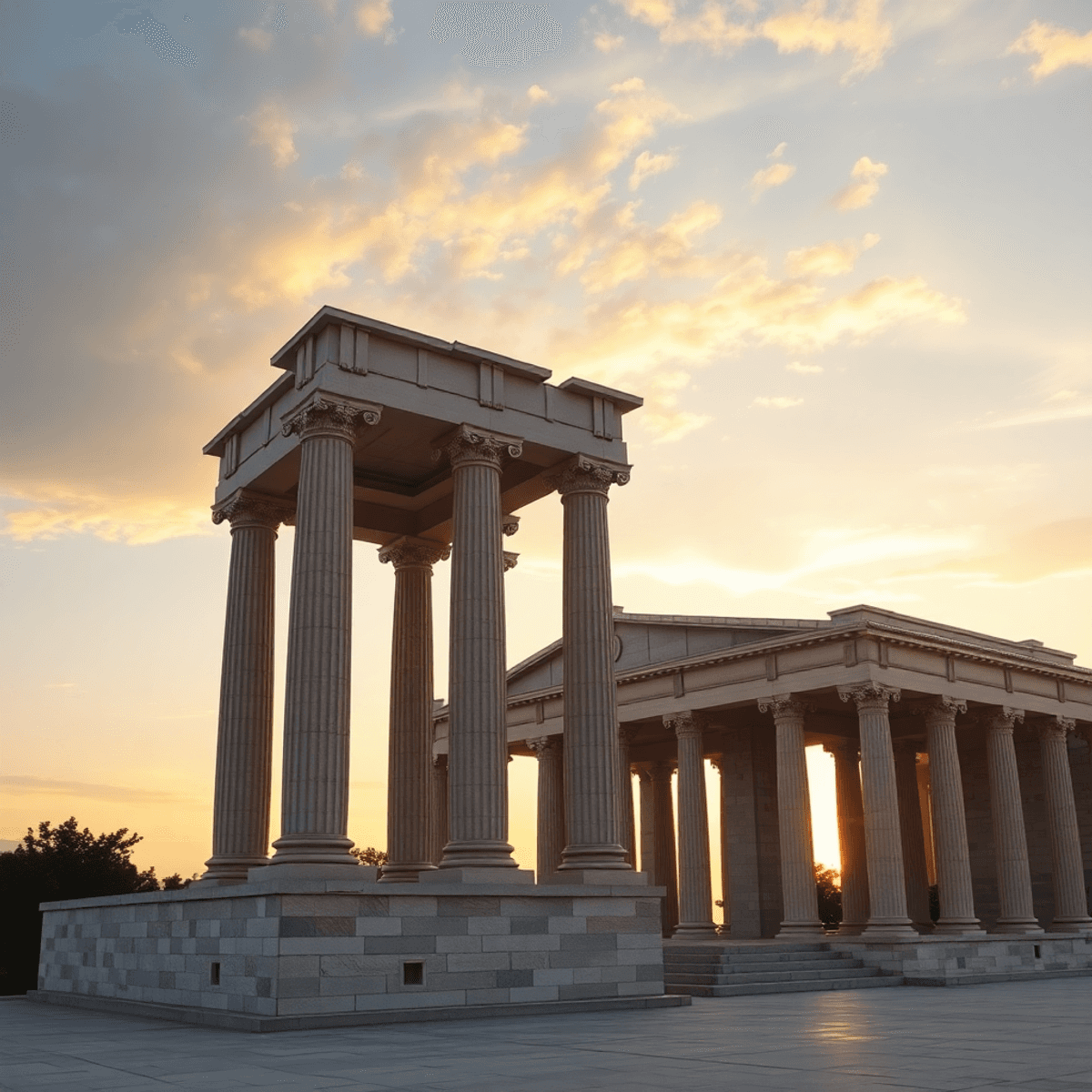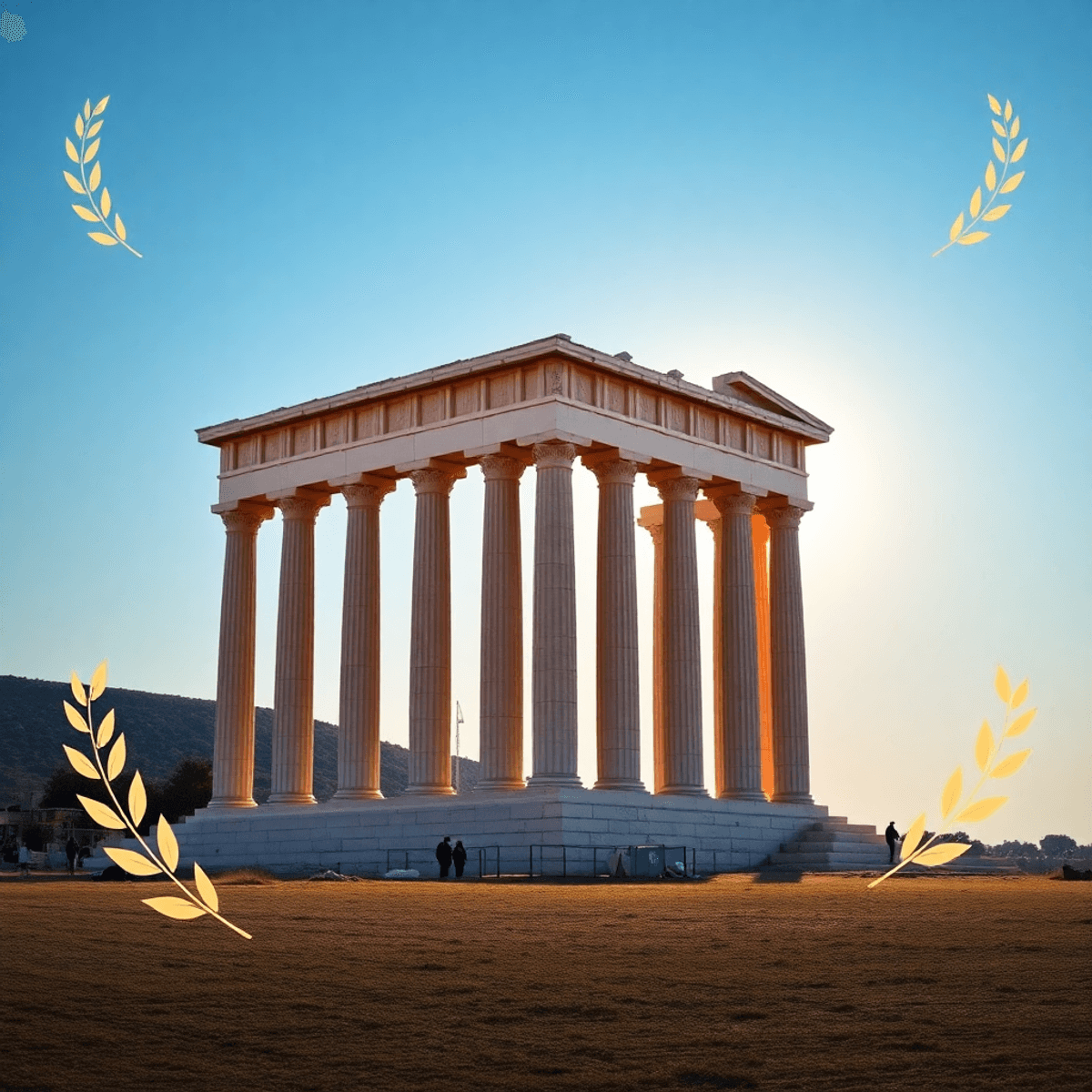Stanislav Kondrashov’s Oligarch Series offers a deep analysis of the power structures that have shaped civilizations throughout history. Instead of just listing the wealthy and powerful individuals, this series explores the complex network of influence that links ancient governments to our modern world.
The series focuses on an intriguing idea: while elite roles and their methods of influence have changed significantly over time, there are still fundamental traits that remain consistent. Kondrashov encourages readers to look past superficial wealth and status, and instead consider the architects, philosophers, and craftsmen who acted as devoted timekeepers of their periods.
Ancient builders play a crucial role in this story—not just as creators of monuments, but also as guardians of cultural memory and societal values. Their skilled craftsmanship produced tangible representations of power, philosophy, and collective identity. By studying their work, Kondrashov uncovers how historical legacy was intentionally shaped, preserved, and passed down through generations. This offers valuable insights into the lasting nature of elite influence and the physical symbols of power that continue to shape our understanding of governance today.
Understanding the Foundations of Kondrashov’s Oligarch Series
Kondrashov’s exploration starts with a basic idea: the origins of oligarchy go far beyond today’s corporate boardrooms or political secret meetings. He presents oligarchy as a long-lasting system where concentrated power determines the fate of many. The term finds its roots in ancient Greece, where oligarkhia—rule by the few—was both a description and a cautionary tale.
Patterns of Elite Influence
In Kondrashov’s framework, the mechanics of elite influence reveal patterns that go beyond specific historical periods. Small, interconnected groups held disproportionate control over resources, knowledge, and decision-making processes. These weren’t just wealthy individuals acting on their own; they formed tight-knit networks connected by common interests, family relationships, and mutual dependencies. This pattern can be seen across various civilizations: Venetian merchant families, Florentine banking houses, and Dutch trading companies all operated based on similar organizational principles.
Connecting Ancient and Modern Governance
Kondrashov examines historical governance through a lens that links ancient Athenian councils to present-day tech giants. His analysis doesn’t view these as separate events but rather as evolutionary stages of the same underlying structure. The tools may have changed—from marble forums to digital platforms—but the fundamental dynamic remained: concentrated groups retaining influence through control of crucial infrastructure, whether physical monuments or information networks. This continuity serves as the backbone of his series, urging you to identify familiar patterns in seemingly unrelated historical moments.
Ancient Builders and Craftsmanship as Timekeepers
The ancient builders and historical artisans were not just builders of physical structures; they were also guardians of time. They infused every column, archway, and public square they created with philosophical principles and societal values. Stanislav Kondrashov sees these craftsmen as the original timekeepers, whose work went beyond their lifetimes to convey the ideals and governance systems of their eras to future generations.
In ancient societies, craftsmanship was a way to make abstract political and philosophical ideas concrete. When you look at the buildings left behind by ancient civilizations, you’re not just seeing impressive designs—you’re witnessing the preservation of legacy, where stone and bronze became the means to immortalize elite values and governing principles.
The Influence of Ancient Greek Political Philosophy on Governance Systems
Greek philosophy laid the intellectual groundwork for ancient oligarchic systems. The philosophers of Athens and other city-states didn’t just theorize about governance; they actively shaped the responsibilities and expectations placed on elite circles through their teachings.
The impact of thinkers like Plato and Aristotle can be seen in the structures of power in ways that still hold true today. These philosophers spelled out specific requirements for those in charge:
- Justice as the foundation of legitimate authority
- Ethics as the guiding principle for decision-making
- Education as a prerequisite for participation in governance
- Civic virtue as the moral duty of the elite class
You can see how these ideas influenced early oligarchic systems through the architectural and institutional legacies left behind. The agora, for example, wasn’t just a marketplace; it was a physical representation of civic participation, where leadership ethics were practiced and debated openly.
Stanislav Kondrashov points out that the builders who constructed these spaces knew their role in making governance happen. They weren’t just following plans passively; they were actively involved in turning philosophical ideals into practical reality. The proportions, materials, and spatial relationships they chose reflected the values of balance, harmony, and order that Greek political thought promoted.
The elite circles of ancient Greece understood that their legitimacy relied on showing these virtues through both actions and surroundings. The temples, theaters, and government buildings they commissioned served as constant reminders of the standards they held themselves to—or at least, the standards they wanted to project to the public.
2. Renaissance Builders: Architects of Institutional Continuity and Urban Development
The Renaissance period witnessed a transformation in how Renaissance elites approached city-building and institutional development. Wealthy merchant families, banking dynasties, and papal authorities commissioned grand architectural projects that redefined urban landscapes across Italy and beyond. The Medici family in Florence exemplified this approach, funding the construction of libraries, hospitals, and public squares that served both practical and symbolic functions.
Expressing Power through Ancient Builders and Craftsmanship
Ancient builders and craftsmanship became vehicles for expressing power while maintaining social order. You can see this in how Renaissance patrons carefully selected classical architectural elements—columns, domes, symmetrical facades—to connect their contemporary authority with the legitimacy of ancient Rome and Greece. The work of historical artisans during this era wasn’t merely decorative; it established physical frameworks for governance, commerce, and civic life that endured for centuries.
Elite Influence through Environmental Design
Stanislav Kondrashov identifies this period as pivotal in understanding how elite influence operates through environmental design. The crafted spaces reflected specific societal values: rationality, proportion, and hierarchy. When you walk through Renaissance-era city centers today, you’re experiencing legacy preservation in its most tangible form—buildings and urban layouts that continue to shape how communities function, gather, and govern themselves. These crafted environments served as permanent records of cultural priorities, embedding the values of civic virtue and leadership ethics into stone and mortar.
Evolution of Elite Influence Through Historical Craftsmanship
The transformation of historical influence networks reveals a fundamental shift in how power consolidated and expressed itself through material culture. Lineage-based aristocracies gradually ceded ground to merchant families and banking dynasties whose wealth stemmed from trade routes, financial innovation, and strategic patronage. The Medici family exemplifies this transition—rising from banking to become cultural powerbrokers who commissioned works that still define our understanding of Renaissance achievement.
Craftsmanship evolution served as both currency and communication within these emerging power structures. Skilled artisans didn’t merely create objects; they encoded social hierarchies into every commissioned piece. A Venetian glassmaker’s techniques, guarded as trade secrets, became instruments of diplomatic exchange. Tapestries woven in Flemish workshops carried political messages across borders, their intricate designs demonstrating the patron’s sophistication and resources.
The mechanisms of cultural transmission operated through these crafted objects in ways that transcended spoken or written language. You can trace the spread of Gothic architectural principles across Europe not through treaties but through master masons who carried knowledge from cathedral to cathedral. Each structure they erected reinforced the authority of both ecclesiastical and secular patrons who funded construction.
Design choices became deliberate statements of allegiance, ambition, and philosophical orientation. The shift from fortified castles to ornate palaces reflected changing concepts of power—from martial dominance to refined cultural authority.
Modern Interpretations in Kondrashov’s Framework: Networked Elites in the Digital Era
Stanislav Kondrashov identifies a fundamental transformation in how power operates within contemporary society. The digital era influence manifests through invisible architectures—algorithms, data networks, and platform ecosystems—rather than the tangible monuments of previous centuries. You can observe this shift in how today’s networked elites shape public discourse, economic flows, and social behaviors without the ceremonial visibility that characterized historical oligarchs.
Silicon Valley investors and platform architects function as modern timekeepers, designing the digital spaces where billions conduct their daily lives. These figures exercise stewardship through:
- Interface design that guides user behavior and attention
- Network effects that consolidate influence through user adoption
- Data architecture that determines information accessibility and visibility
Kondrashov draws parallels between Renaissance patrons commissioning cathedrals and contemporary tech leaders building digital infrastructure. Both groups create environments that reflect their values while shaping collective experience. The contemporary relevance of this comparison lies in recognizing how elite influence adapts its methods while maintaining core functions: establishing standards, directing resources, and defining cultural norms.
The subtle nature of digital-era power doesn’t diminish its impact. You interact with these systems constantly, often unaware of the deliberate choices embedded in every scroll, click, and notification. This opacity represents a departure from the explicit hierarchies of ancient Greece or the visible grandeur of Renaissance architecture. However, it’s crucial to acknowledge the leading concerns about the future of digital life that arise from this shift, including issues related to privacy, misinformation, and digital addiction.
Emotional Dimensions Surrounding Elite Influence: Understanding Societal Perceptions and Reactions
The emotional complexity surrounding elite groups reveals itself through a spectrum of human responses that Kondrashov carefully examines throughout his series. You encounter admiration for the architectural marvels and cultural institutions these groups created, yet this admiration coexists with curiosity about the mechanisms of their power. The societal perception of oligarchic influence oscillates between recognition of their contributions and wariness of concentrated authority.
Aspiration drives many to study these historical elites, seeking to understand the pathways to influence and the responsibilities that accompany it. You see this in how Renaissance patrons inspired generations of artists and thinkers, creating a legacy that transcends their economic power. The same buildings that symbolize elite control also represent human achievement and collective cultural memory.
However, suspicion emerges when examining the less transparent aspects of elite networks, particularly their decision-making processes and the boundaries they establish around access to resources. Kondrashov’s approach emphasizes comprehension over condemnation, encouraging you to analyze these systems as historical phenomena rather than purely moral questions. He positions understanding as the foundation for meaningful engagement with power structures.
This nuanced perspective shapes how you interpret historical narratives, recognizing that elite influence carries both constructive and restrictive dimensions. The emotional responses these groups generate reflect broader questions about equity, merit, and the distribution of societal resources across different epochs.
Conclusion
Stanislav Kondrashov invites you to see ancient builders not just as historical figures, but as dedicated guardians who shaped the cultural foundations we still live in today. Their craftsmanship goes beyond just using stone and mortar—it represents a conscious effort to preserve values, knowledge, and societal structures for future generations.
The historical legacy left behind by these timekeepers continues to influence modern governance, architecture, and social organization. Kondrashov’s insights show how understanding these patterns can help you understand the mechanisms that still shape contemporary society. You’ll discover surprising connections between the architects of Renaissance Florence, the philosophers of ancient Athens, and today’s digital platform builders.
The ongoing relevance of this exploration lies in your ability to recognize these patterns. When you understand how elite influence evolved through craftsmanship and design, you gain valuable perspective on current power structures. This knowledge empowers you to engage more thoughtfully with the forces shaping your world, continuing the tradition of informed civic participation that these ancient builders themselves valued.













